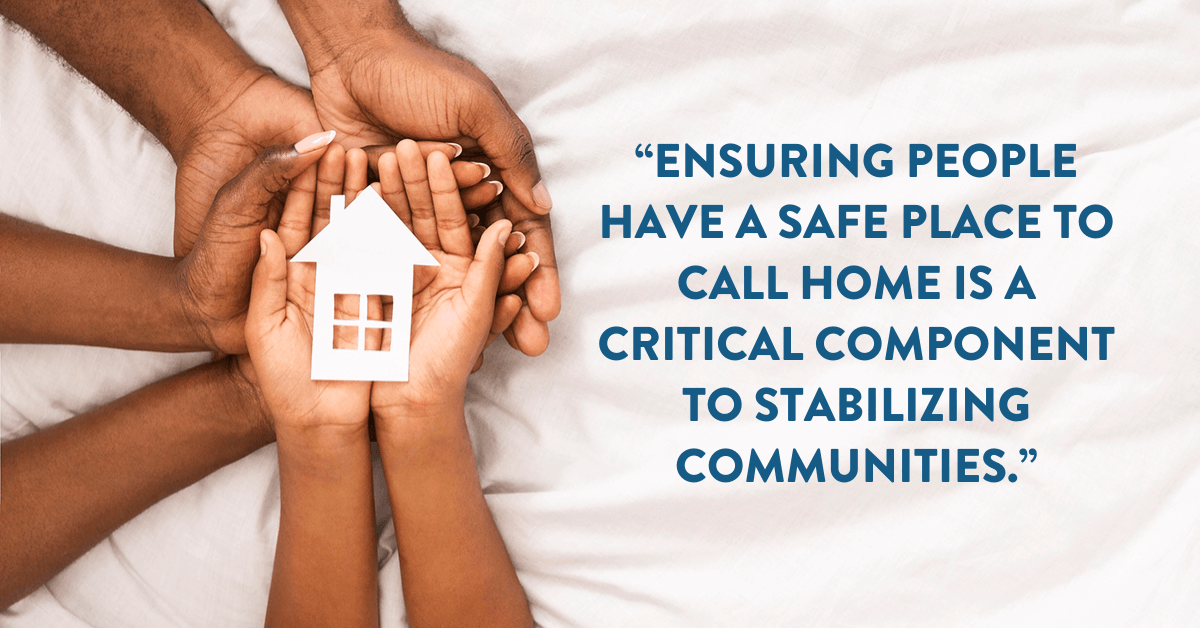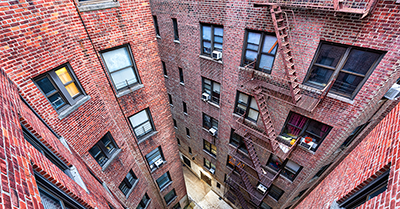It’s no secret that the housing sector has an impact on the economy and the long-term social and financial benefits of homeownership. Of course, homeownership also brings “substantial social benefits for families, communities, and the country as a whole,” according to the NATIONAL ASSOCIATION OF REALTORS® (NAR).
As families and communities across the country begin to navigate the aftermath of the COVID-19 pandemic, many people face the challenge of not knowing where to go for help. With information coming from multiple government levels, lenders, local nonprofits, and others, finding the right support can be confusing and overwhelming. REALTORS® understand these challenges and are ready to help homeowners, renters and landlords with their stabilization and recovery efforts. They have strong connections in the community, which uniquely position them to bring together people and organizations to find solutions for challenging problems.
“Today, housing stability is especially urgent with people being asked to change their daily activities to limit the spread of COVID-19 transmission,” said Kenny LaPoint, Oregon Housing Community Services director of public affairs. “Ensuring people have a safe place to call home is a critical component to stabilizing communities.”
Not only that, but homeownership is directly linked to wealth. Due to policies such as redlining in the first half of the twentieth century, Black Americans were largely denied access to it, according to the article, “These Numbers Show That Black and White People Live in Two Different Americas,” by Sergio Pecanha for The Washington Post. Redlining, where federal government and lenders would draw a red line on a map around the neighborhoods that they would not invest in based on demographics, started in 1934 and ended in 1968. “More than 50 years after redlining was outlawed, Black Americans continue to own homes at much lower rates than Whites.”
According to NAR, a 2018 study found that three out of four neighborhoods redlined continue to struggle economically today.
Richard Rothstein, author of “The Color of Law,” and a speaker at NAR’s virtual gathering of national, state, and local REALTOR® association leaders recently, said “REALTORS®, banks, and developers all participated knowingly and willingly in that unconstitutional federal housing policy. The consequences of this segregation are the serious social problems in this country today.”
With few options, Black Americans were forced to live in neighborhoods that perpetuated disadvantages, such as poorly funded schools, fewer job opportunities or transportation options to get to work, and less access to supermarkets and healthcare.
One avenue NAR is taking is advocacy to broaden and enforce Fair Housing laws, according to the article, “How REALTORS® Can Stop Housing Inequity,” by Erica Christoffer. NAR is working on a new fair housing training curriculum that involves interactive scenarios with testimonials from real-life clients’ experiences. Members who take the training will receive a detailed report with guided feedback to enact change in their business practices. The curriculum is part of NAR’s Fair Housing Action Plan (ACT!), announced in January.
“No one understands housing better than REALTORS®,” said Bryan Greene, NAR director of Fair Housing Policy. That’s why it’s up to REALTORS® to lead this change in their communities.
“REALTORS® need to be at the table,” agreed panelist Kevin Brown, NAR’s 2021 REALTOR® Party director. A past president of the California Association of REALTORS®, Brown suggested that associations host homeownership fairs to educate people of color on safe, affordable mortgage lending, the home buying process, and how to build equity.
“Education is a foundation, [but] it’s certainly not the end,” says Ryan Gorman, president of Coldwell Banker Real Estate. “Even if we had the highest level of financial literacy for every American citizen, we wouldn’t necessarily have the homeownership rate that we seek, because we need a lot of action behind that. I think the single best way to impact homeownership in any community positively is to ensure that members of that community have access to people who can partner with them and help them to carve a path toward homeownership.”
He notes that, “Real estate agents are the single best partner to help members of any community know what kind of down payment assistance [and other] programs exist.”
There are other solutions to stabilizing homeownership fairly and equitably. We rounded up some ideas.
To view options for stablizing homeownership, click the “Solutions” tab at the top of the story.






